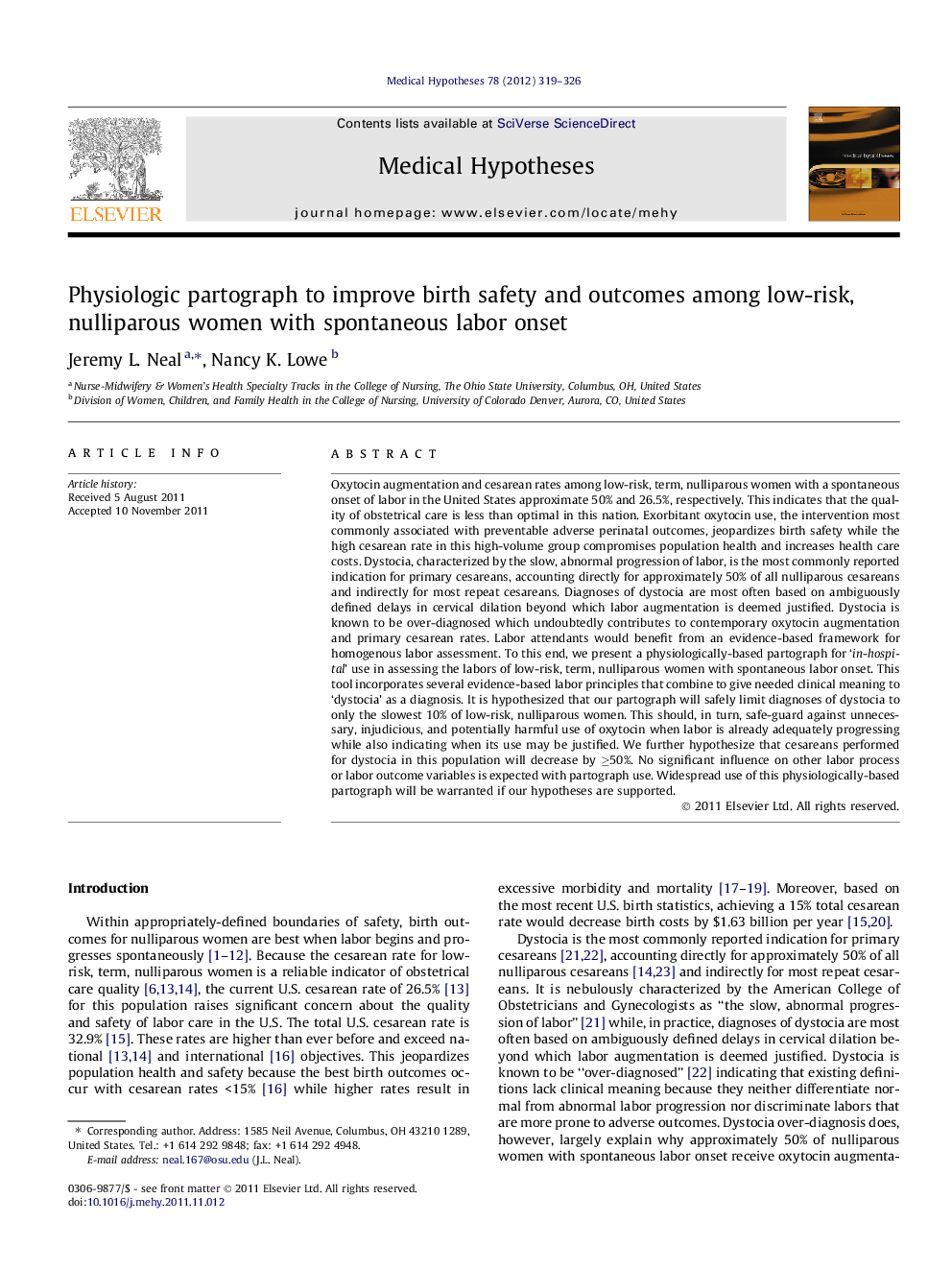| کد مقاله | کد نشریه | سال انتشار | مقاله انگلیسی | نسخه تمام متن |
|---|---|---|---|---|
| 2489556 | 1115045 | 2012 | 8 صفحه PDF | دانلود رایگان |

Oxytocin augmentation and cesarean rates among low-risk, term, nulliparous women with a spontaneous onset of labor in the United States approximate 50% and 26.5%, respectively. This indicates that the quality of obstetrical care is less than optimal in this nation. Exorbitant oxytocin use, the intervention most commonly associated with preventable adverse perinatal outcomes, jeopardizes birth safety while the high cesarean rate in this high-volume group compromises population health and increases health care costs. Dystocia, characterized by the slow, abnormal progression of labor, is the most commonly reported indication for primary cesareans, accounting directly for approximately 50% of all nulliparous cesareans and indirectly for most repeat cesareans. Diagnoses of dystocia are most often based on ambiguously defined delays in cervical dilation beyond which labor augmentation is deemed justified. Dystocia is known to be over-diagnosed which undoubtedly contributes to contemporary oxytocin augmentation and primary cesarean rates. Labor attendants would benefit from an evidence-based framework for homogenous labor assessment. To this end, we present a physiologically-based partograph for ‘in-hospital ’ use in assessing the labors of low-risk, term, nulliparous women with spontaneous labor onset. This tool incorporates several evidence-based labor principles that combine to give needed clinical meaning to ‘dystocia’ as a diagnosis. It is hypothesized that our partograph will safely limit diagnoses of dystocia to only the slowest 10% of low-risk, nulliparous women. This should, in turn, safe-guard against unnecessary, injudicious, and potentially harmful use of oxytocin when labor is already adequately progressing while also indicating when its use may be justified. We further hypothesize that cesareans performed for dystocia in this population will decrease by ≥≥50%. No significant influence on other labor process or labor outcome variables is expected with partograph use. Widespread use of this physiologically-based partograph will be warranted if our hypotheses are supported.
Journal: Medical Hypotheses - Volume 78, Issue 2, February 2012, Pages 319–326